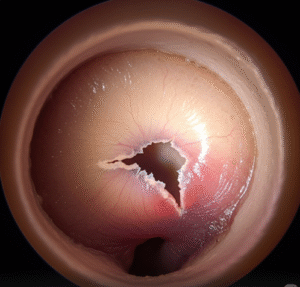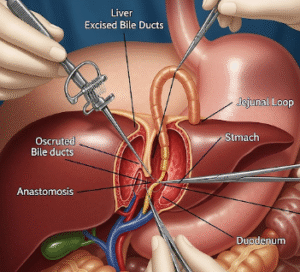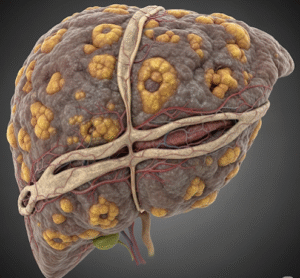Overview
Epidural injections are minimally invasive procedures used to alleviate chronic pain in the back, neck, or lower limbs. By delivering steroids or anesthetic medication directly into the epidural space surrounding the spinal cord, these injections target inflammation and nerve irritation, providing rapid and effective pain relief.
In South Korea, epidural injections are performed in advanced pain management and spine centers using fluoroscopy (real-time X-ray) or ultrasound guidance. Korean hospitals are known for their precision, safety, and expert anesthesiologists, making them a top choice for patients seeking long-term pain management.
What is an Epidural Injection for Chronic Pain Relief?
An epidural injection involves placing a needle into the epidural space of the spine to deliver steroid or anesthetic medication. This reduces inflammation, nerve irritation, and pain signals, helping patients regain mobility and quality of life.
Common indications include:
- Chronic lower back pain caused by herniated discs or spinal stenosis
- Neck pain associated with cervical spine disorders
- Sciatica or leg pain due to nerve compression
- Failed conservative therapy → when medications or physical therapy are insufficient
Epidural injections are both diagnostic and therapeutic, helping identify the source of pain while providing relief.
What are the benefits?
Epidural injections for chronic pain offer multiple advantages:
- Targeted pain relief → medication is delivered directly to affected nerves
- ➤ Minimally invasive → avoids major surgery
- ➤ Rapid improvement → pain relief may begin within hours to days
- ➤ Reduces inflammation and nerve irritation → improves function and mobility
- ➤ Adjunct to rehabilitation → facilitates physical therapy and long-term recovery
- ➤ Widely available in Korea → performed with advanced imaging and expert anesthesiologists
Procedure Details
1) How should I prepare for an Epidural Injection?
Preparation is essential for safety and optimal results:
- Medical evaluation → review medical history, allergies, and current medications
- Medication adjustment → anticoagulants or blood-thinning medications may require temporary discontinuation
- Hydration → drink water unless instructed otherwise
- Fasting instructions → sometimes required if sedation is planned
- Informed consent → discuss procedure, risks, benefits, and expectations
2) What happens during the procedure Epidural Injection?
The procedure usually takes 15–30 minutes:
- Patient positioning → lying face down or on the side to access the targeted spine level
- Sterilization and local anesthesia → skin is cleaned and numbed at the injection site
- Needle insertion → guided into the epidural space using fluoroscopy or ultrasound for accuracy
- Contrast dye (optional) → confirms proper needle placement
- Medication delivery → steroid, anesthetic, or a combination is injected to reduce inflammation and pain
- Completion → needle is removed, and a small dressing is applied
In Korea, epidural injections are performed with high precision and imaging guidance, ensuring safety and optimal therapeutic effect.
3) What happens after an Epidural Injection?
- Immediate monitoring → patients are observed for 15–30 minutes for side effects
- Pain relief onset → some patients experience relief within hours, others over several days
- Activity restriction → avoid heavy lifting or strenuous activity for 24–48 hours
- Follow-up → repeated injections may be scheduled if needed for chronic pain management
- Adjunct therapy → physical therapy or rehabilitation may be recommended to enhance outcomes
Risks / Benefits
Potential Risks:
- Temporary pain or soreness at the injection site
- Mild headache or dizziness
- Rare complications → infection, bleeding, nerve injury, or allergic reaction
- Temporary numbness or weakness in legs
Key Benefits:
- Effective, targeted relief for chronic pain
- ➤ Minimally invasive alternative to surgery
- ➤ Reduces inflammation and nerve irritation
- ➤ Enhances function and mobility
- ➤ High success rates in Korea with expert pain specialists
Recovery and Outlook
- Immediate recovery → most patients can walk and perform light activities after the procedure
- Short-term effects → soreness at injection site, mild numbness, or temporary weakness may occur
- Long-term outlook → repeated injections combined with physical therapy can provide sustained pain relief
- In Korea, patients benefit from comprehensive follow-up, imaging guidance, and personalized pain management plans to ensure optimal recovery and prevention of recurrence
When To Call the Doctor
Contact your healthcare provider if you experience:
- Severe pain at the injection site or persistent headache
- ➤ Signs of infection such as redness, swelling, or discharge
- ➤ Persistent numbness, weakness, or difficulty walking
- ➤ Allergic reactions such as rash, itching, or breathing difficulty
- ➤ Severe back pain or neurological symptoms beyond normal recovery
Timely evaluation ensures safe recovery and effective pain management.
Best Korea Option / Process
South Korea is a leading destination for minimally invasive pain management procedures:
- Expert anesthesiologists and pain specialists → highly trained in epidural injections
- Advanced imaging guidance → fluoroscopy and ultrasound ensure precise needle placement
- Comprehensive care packages → pre-procedure evaluation, injection, monitoring, and follow-up
- Minimally invasive approach → outpatient procedure with rapid recovery
- Patient-centered care → multilingual support and international patient services
Patients choosing Korea for epidural injections for chronic pain can expect precise treatment, effective pain relief, and professional follow-up, making it one of the top destinations for chronic pain management.













